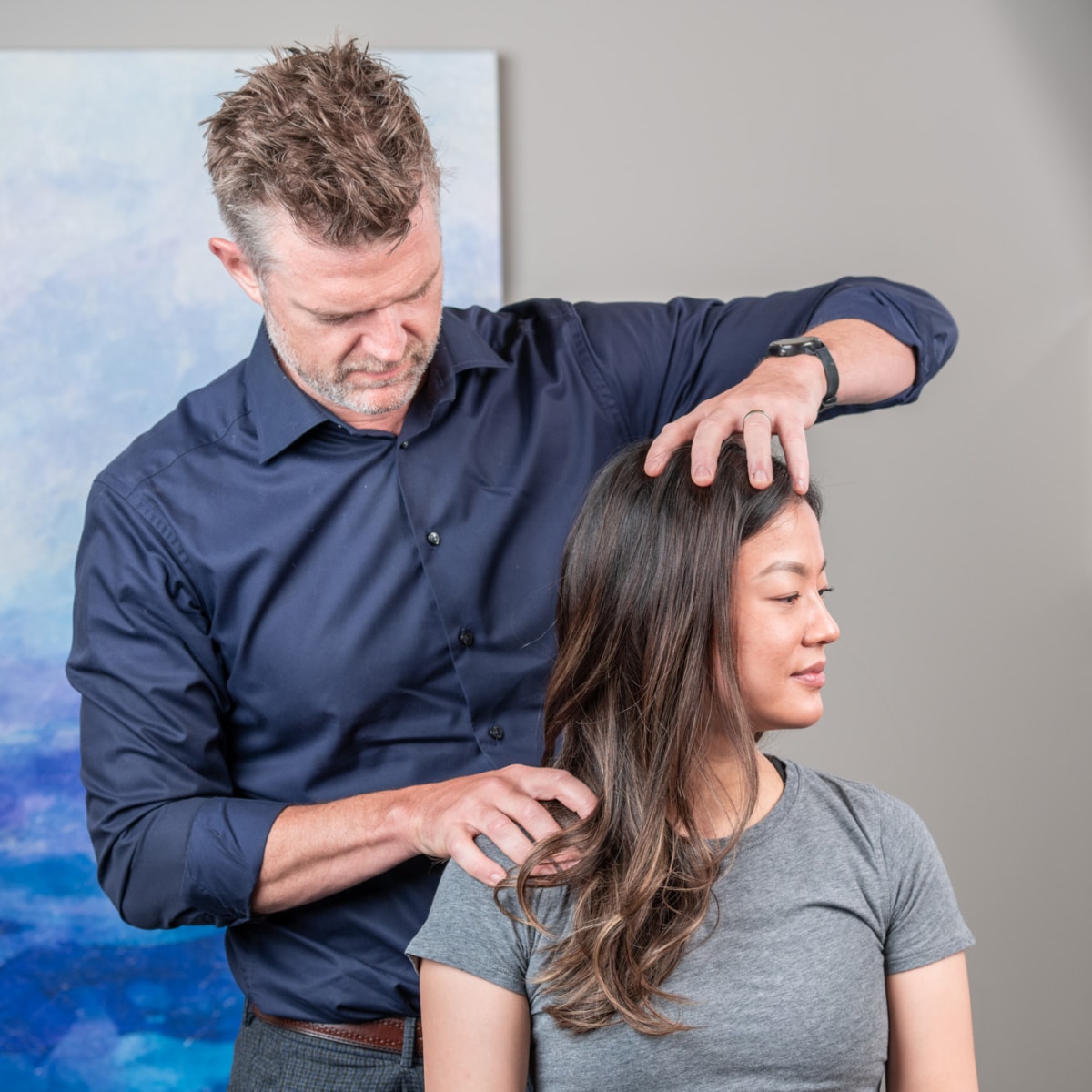
Better Back Pain Program
Let's resolve your lower back pain issues
With their many years of experience, the clinicians at Calgary Core Physiotherapy have helped many Calgary Low Back Pain patients resolve their recurrent or chronic low back problems. The Calgary Core Physio Better Back Pain Program is specially tailored to each patient, and has proven to be effective for so many Calgary Back Pain sufferers.
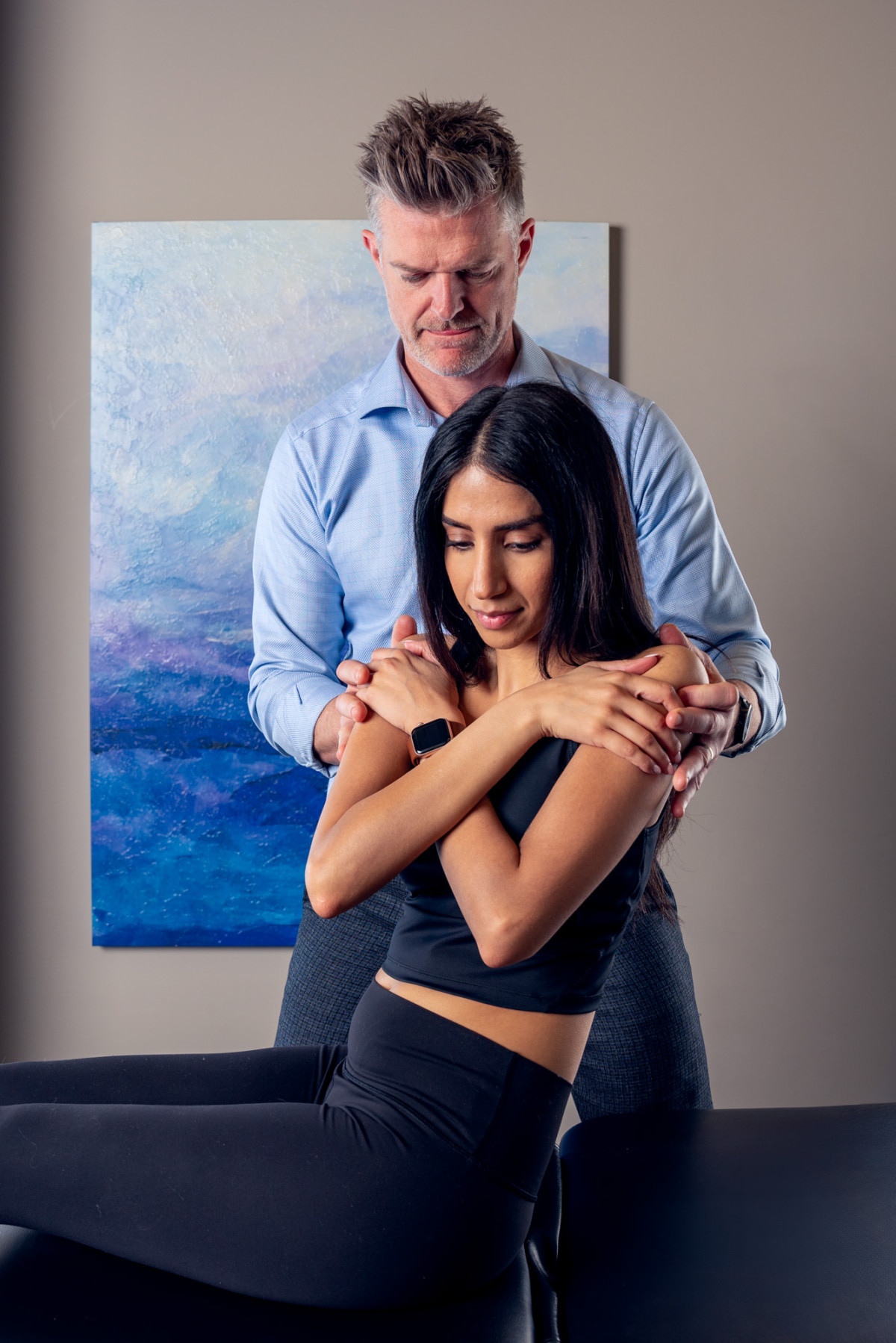
What does our Low Back Pain Program include?
-
Assessment
A thorough assessment of your back by an experienced physiotherapist that focuses on achieving a diagnosis of your problem and help you gain a full understanding of your back pain and injury
-
Ongoing Evaluation
Further evaluation into the way you move, how your muscles are working or not working, what your other joints look like and figuring out the “core” issues of your back pain and injury
-
Imaging (if needed)
Appropriate referral for diagnostic imaging, such as an x-ray or MRI, if required
-
An action plan
Based on years of clinical back pain experience and the most current research, a methodical plan of action to help you start living without back pain
-
A treatment schedule
Prompt and effective treatment by team members at the clinic with the focus of getting you better, faster
-
Physician/Health Care Consult (if needed)
Working closely with your family physician and other health care providers and, if necessary, “quarterbacking” your back pain treatment plan
-
Fitness Rehab Recommendations
Referral to our partner fitness studios in the community, and regularly communicating with those partners about your specific back pain injury during classes - to help maintain your pain-free and healthy lifestyle
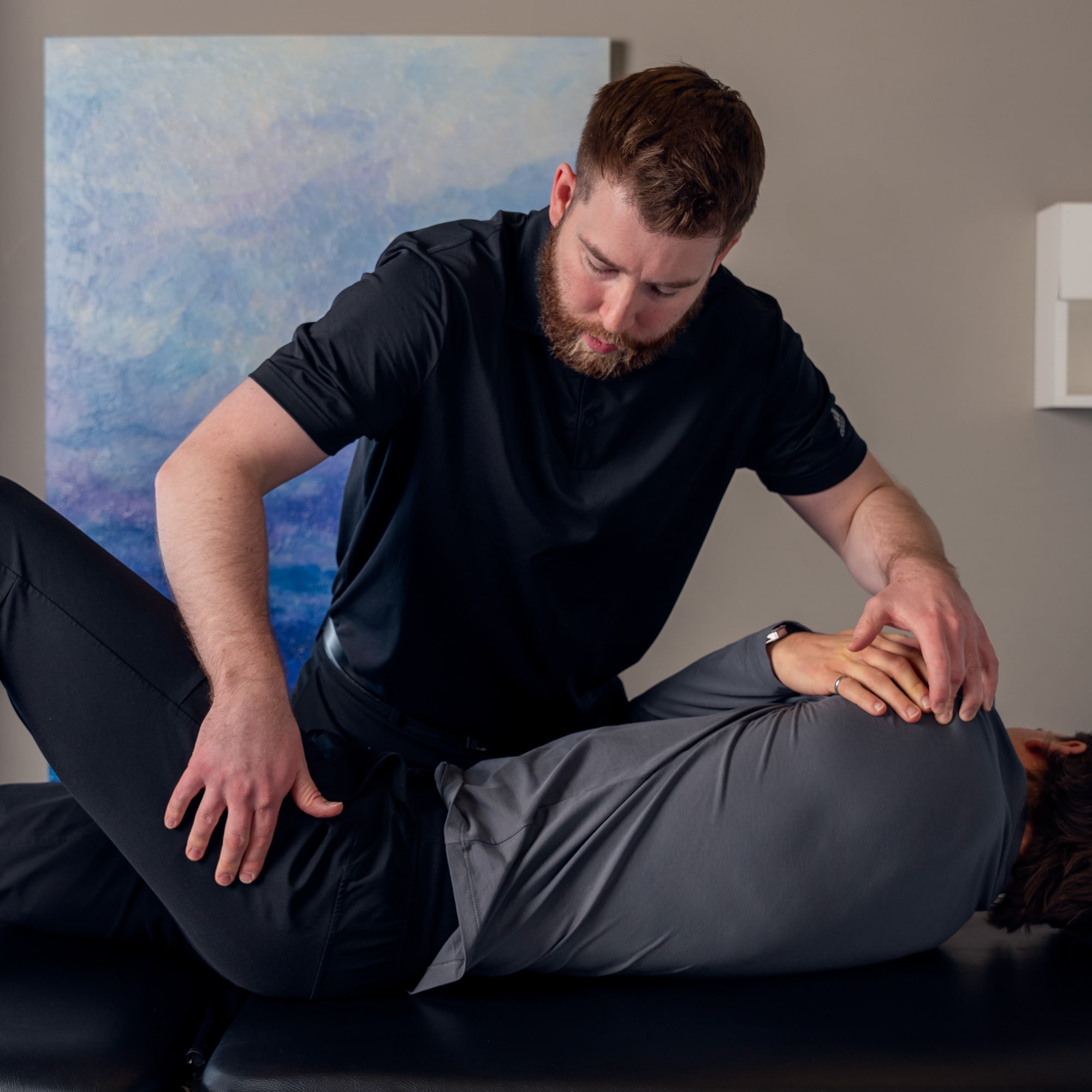
What are typical conditions that this program can help with?
The three most common conditions that the Calgary Core Physio Better Back Pain addresses are:
What is a disc protrusion? What is sciatica?
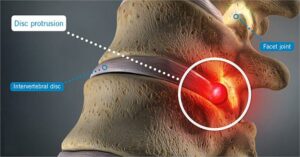 A disc is like a jelly doughnut; it has rings on the outside surrounding a soft, jelly-like material. Some of the rings around the jelly can be strained or rupture, allowing some of the jelly material to “squish out. There are different severities of a disc protrusion; if the jelly material pushes out further, it may compress a nerve root and cause sciatica.
A disc is like a jelly doughnut; it has rings on the outside surrounding a soft, jelly-like material. Some of the rings around the jelly can be strained or rupture, allowing some of the jelly material to “squish out. There are different severities of a disc protrusion; if the jelly material pushes out further, it may compress a nerve root and cause sciatica.
Sciatica is pain that radiates from the sciatic nerve, which travels from your low back to your hips, buttocks, and leg. About 90% of the time, sciatica is caused by a disc protrusion. Sciatica may also be caused by such conditions as lumbar stenosis, piriformis syndrome or degenerative disc disease.
How does the Calgary Core Physio Better Back Pain Program assess a disc protrusion or sciatica?
One of our experienced physiotherapists will ask you many details about your low back and sciatic pain and problems. For example, was there a bending or twisting injury that brought on the pain, which can cause increased stress on the disc? What kinds of activities make the pain worse or better? We also ask important medical questions that may be important to seek medical attention.
We then do a careful evaluation of how your low back is moving, see how the nerves are functioning, test the muscle strength of key muscles, and assess the movement of the nerves. We dig deeper and examine your walking and movement patterns, assess your other joints and muscles, and figure out what caused the increased stress on the disc and nerve, why it hasn’t been getting better, and what needs to be done to get it better.
Depending on the condition, and in communication with your family doctor, we may refer you for an x-ray or MRI of your low back.
What does a treatment plan look like in the Calgary Core Physio Back Pain Program for a disc protrusion or sciatica?
The goals of treating a disc protrusion and sciatica are to decrease the pressure on the disc and nerve, promote healing, and prevent further aggravation of the disc and nerves.
Depending on the severity of your disc protrusion or sciatica, we would apply traction or other mobilization techniques to the disc either with our hands or using our special Lojer mobilization bed (http://www.lojer.com/product/manuthera-mobilisation-table); this is to stimulate healing of the disc and take pressure off of the disc and nerve.
IMS, or Intramuscular Stimulation is another effective method of reducing compression on the disc, nerves, and muscles. In more acute episodes, acupuncture can help alleviate more severe pain and immobility.
Based on our assessment, we would use additional techniques to address other joint restrictions, muscle tightness or weakness, and correction of poor movement patterns.
Your program will include specific exercises to alleviate pressure and stimulate healing of the disc and nerve, strengthen weak core stability and other muscles, and progress your exercise program as you continue to improve and get back to healthy living.
We would also discuss your medication management with your family doctor and if other interventions are required, depending on your progress in the program. This may include referral by your family doctor to a radiologist for injection procedures to reduce inflammation of the disc and nerve, or your family doctor’s referral to a surgeon.
For the majority of patients in the Calgary Core Physio Better Back Pain Program, with improvement in their pain and function, we advise when or if you are ready to return to your various sports and activities, or if a special back class would be appropriate at one of our partner fitness studios.
What is SI joint pain?
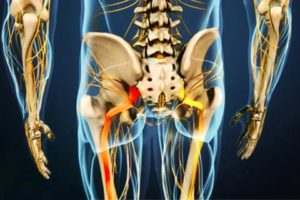 The sacroiliac, or SI, joint joins the pelvis to the spine. It is normally a strong, stable joint; it has a small amount of movement in it to allow you to walk, run and move.
The sacroiliac, or SI, joint joins the pelvis to the spine. It is normally a strong, stable joint; it has a small amount of movement in it to allow you to walk, run and move.
However, a fall on the buttock, an awkward twist, pregnancy, or repetitive strain on the SI joint, such as from excessive sitting or running, can result in pain and dysfunction in the joint. Some SI joint pain sufferers describe it as feeling “out” or painful to do things such as rolling over in bed or sitting and getting up from a chair.
How does the Calgary Core Physio Better Back Pain Program assess SI joint pain?
One of our experienced physiotherapists discusses your injury and medical history to help determine if and how these were contributors to your SI joint pain. We do special tests to examine your SI joint’s position, movement, and stability. We examine the joints above and below the SI joint, and assess the muscle function of muscles around the SI joint, legs, and core stability muscles.
We get to the “core” issues behind the SI joint pain. For example, is there a muscle that is not being used to support the SI joint? Is there increased movement in the SI joint and are the ligaments surrounding the joint strong enough to support the joint? Is there a previous injury in the knee or ankle that that has been compensated for in the SI joint?
What does a treatment plan look like in the Calgary Core Physio Back Pain Program for SI joint pain?
Our goals of treatment for SI joint pain would be to reduce or eliminate the pain, increase the strength and stability around the joint, and address any other contributing factors to the SI joint pain to prevent re-occurrences.
If there is excessive inflammation in the SI joint, use of our Class IV Laser Therapy or acupuncture may be indicated to reduce the inflammation and promote healing in the joint. In more severe cases, we may communicate with your family doctor and discuss a possible cortisone injection into the SI joint to reduce the inflammation.
IMS, or Intramuscular Stimulation may be used to reduce muscle tension around the joint and encourage proper use of these muscles in supporting the joint.
If the SI joint is feeling “stuck” or in the wrong position, the SI joint may be mobilized or manipulated to get it back into the right position.
If there is excessive movement in the joint, an SI joint belt may be recommended to provide stability to the joint. In cases in which the ligaments supporting the joint have been overstretched, a referral may be made for prolotherapy.
Based on our assessment, you will be shown various exercises to reduce stress and strain on the SI joint, exercises to increase strength of muscles around the joint and other involved muscles, and exercises to improve your mobility and function. We will advise you on your return to activity and refer you to special core stability classes at one of our partner fitness studios to get you back moving without pain.
What is degenerative disc disease?
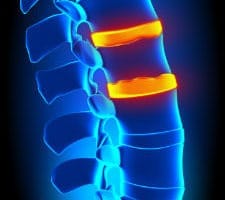 It is a normal aging process for the discs in your low back to degenerate. However, previous trauma to the low back or repetitive wear and tear on your low back may accelerate the degeneration of the discs. This may then be termed “degenerative disc disease”. However, it is important to note that many people have degenerative disc disease and have no pain or symptoms at all.
It is a normal aging process for the discs in your low back to degenerate. However, previous trauma to the low back or repetitive wear and tear on your low back may accelerate the degeneration of the discs. This may then be termed “degenerative disc disease”. However, it is important to note that many people have degenerative disc disease and have no pain or symptoms at all.
Pain in your low back associated with degenerative disc disease may stem from increased inflammation in the discs or excessive motion in the discs. In either of these instances, your back muscles go into spasm as a protective response. However, this protective muscle spasm is painful and, like a vicious cycle, compresses the disc further to continue the degenerative process.
As the disc compresses and loses its height, other structures may also become involved. Degenerative disc disease may also be associated with other conditions such as facet joint osteoarthritis, spinal stenosis, and sciatica.
How does the Calgary Core Physio Better Back Pain Program assess degenerative disc disease?
One of our experienced physiotherapists will review the whole history of your low back pain. We will discuss the description of your pain, factors that make it better or worse, or how it feels in the morning or night. We will try to piece together the story behind your low back pain and what needs to be done to finish the story!
We will carefully examine your low back movement at each individual level – is there a restriction at one level and excessive movement at another level? We will assess the movements of your SI joints, hips, and other contributing joints. We will determine how the nerves and muscles are functioning in your back and legs. We will examine your walking pattern, other functional movements, biomechanics and posture.
In communication with your family doctor, we may refer you for an x-ray or MRI of your low back to determine the severity of your condition, and if necessary, to assist in your treatment plan.
What does a treatment plan look like in the Calgary Core Physio Back Pain Program for degenerative disc disease?
The goals of treatment for degenerative disc disease would be to reduce your pain and muscle spasm, get your low back stronger and healthier, and have you return to your daily life, work, sports and activities as soon as possible.
Intramuscular stimulation (IMS) is an exceptional way to break the vicious cycle of pain and compression from tight muscles.
Joint mobilizations and manipulation and exercise have also been shown in clinical research studies to effectively reduce the pain and improve function for patients with degenerative disc disease. As you continue to progress, we will provide you with recommendations on your return to sports and activities or a special back class at one of our partner fitness studios.
Class IV laser therapy can also help treat your degenerative disc disease by increasing blood flow to the low back, reducing inflammation in the disc and facet joints, and stimulating the healing process in the low back.
Depending on the condition and your response to physiotherapy, a referral for prolotherapy may be indicated or communication with your family doctor on possible referral to different radiological interventions, if required.
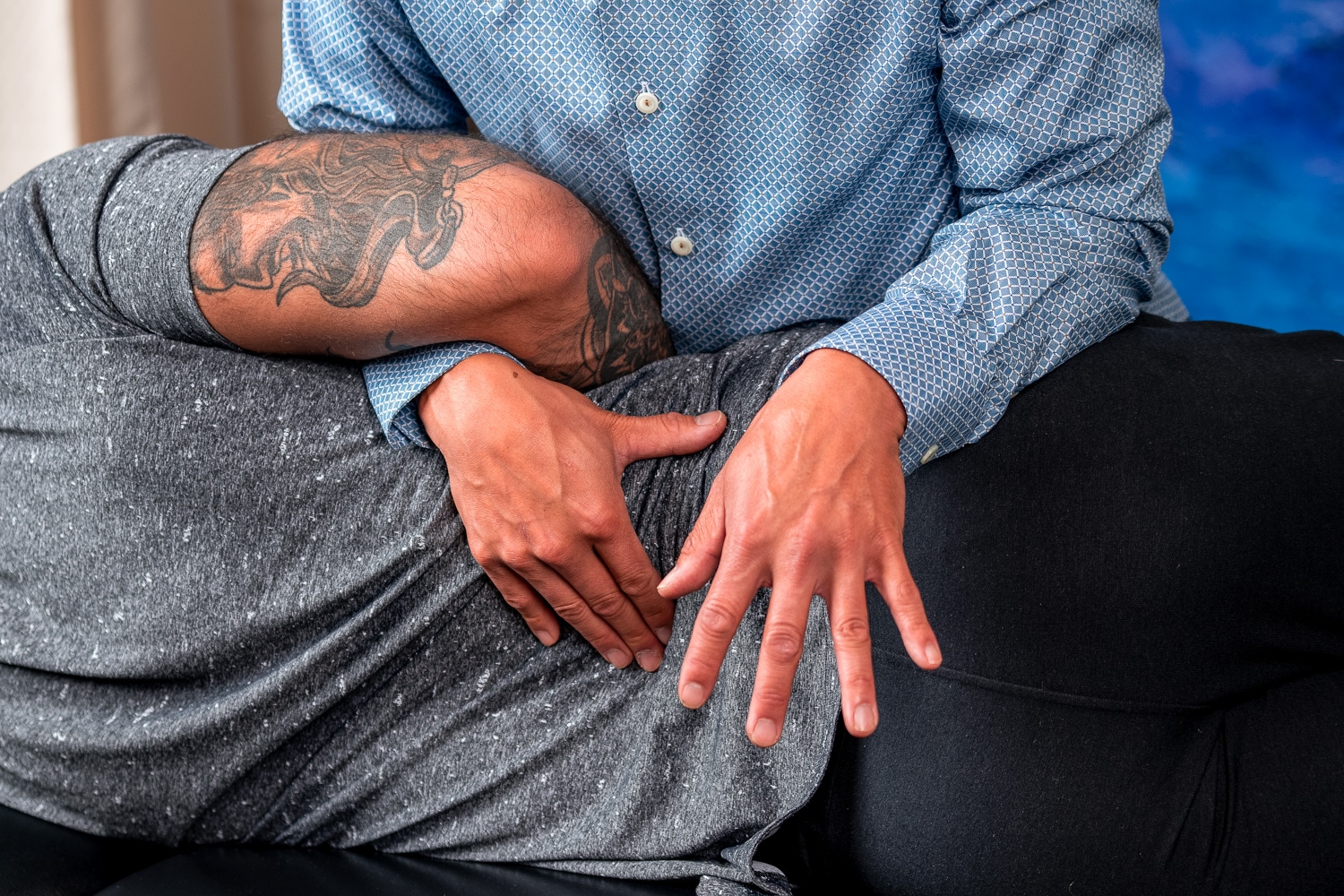
Interested? Want to book? Let's talk.
You can call us at (403) 455-4010, or use the form below. We'll reply within 1-business day.
Your lasting recovery is our priority.
Let’s get you better:
